
The ghazal is a form of amatory poem or ode, originating in Arabic poetry. Ghazals often deal with topics of spiritual and romantic love and may be understood as a poetic expression of both the pain of loss or separation from the beloved and the beauty of love in spite of that pain.

Urdu poetry is a tradition of poetry and has many different forms. Today, it is an important part of the culture of India and Pakistan. According to Naseer Turabi there are five major poets of Urdu: Mir Taqi Mir (d.1810), Mirza Ghalib, Mir Anees (d.1874), Muhammad Iqbal and Josh Malihabadi (d.1982). The language of Urdu reached its pinnacle under the British Raj, and it received official status. All famous writers of Urdu language including Ghalib and Iqbal were given British scholarships. Following the Partition of India in 1947, it found major poets and scholars were divided along the nationalistic lines. However, Urdu poetry is cherished in both the nations. Both the Muslims and Hindus from across the border continue the tradition.

Mir Babar Ali Anees, also known as Mir Anees was an Indian Urdu poet. He used his pen-name (takhallus) of Anees in poetry. Anees used Persian, Urdu, Arabic, and Sanskrit words in his poetry. Anis wrote prolonged Marsias, which was a custom of his times, but nowadays only selected sections are narrated even in religious ceremonies. He died in 1291 Hijra, corresponding with 1874 CE.
Mehdi Hassan Khan known as Mehdi Hassan was a Pakistani ghazal singer and playback singer. Widely considered one of the greatest and most influential figures in the history of ghazal singing, Hassan is referred to as the "Shahenshah-e-Ghazal". Known for his "haunting" baritone voice, Hassan is credited with bringing ghazal singing to a worldwide audience. He is unique for his melodic patterns and maintaining integrity of the ragas in an innovative way.
The maqta is the last sher of a ghazal, a collection of Urdu poems and the poet's takhallus, or pen name, is usually employed in it, often in very creative ways.

Beher or Bahr in Urdu poetry is the meter of a sher (couplet). Essentially, beher is a specific pattern, combining the arkaan of Urdu prosody that define the "length" of a sher. However, generally beher is categorized in three classes: Short, medium, long, depending upon the length of the sher of the ghazal.
A takhallus, is a pen-name. Pen names were widely adopted by Urdu, Punjabi, Hindi and Persian poets.
A shayar is a poet who composes sher or couplet in Urdu poetry. A shayar is someone who writes ghazals, nazms using the Urdu, Hindi & Bangla language.
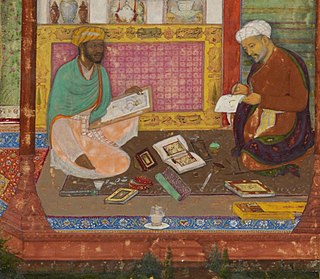
In Islamic cultures of the Middle East, North Africa, Sicily and South Asia, a Diwan is a collection of poems by one author, usually excluding his or her long poems (mathnawī).

Mir Muhammad Taqi, known as Mir Taqi Mir, was an Urdu poet of the 18th century Mughal India and one of the pioneers who gave shape to the Urdu language itself. His father's name was Meer Muttaqi. After his father's death, his step-Brothers took control over his property. His step-uncle took care of him after he was orphaned and after the death of his step-uncle(paternal) his maternal step-uncle took care of him. The signature of his poetry is the grief he expresses. He has expressed a lot of grief over the downfall of his city, Delhi. He was one of the principal poets of the Delhi School of the Urdu ghazal and is often remembered as one of the best poets of the Urdu language. His pen name (takhallus) was Mir. He spent the latter part of his life in the court of Asaf-ud-Daulah in Lucknow.
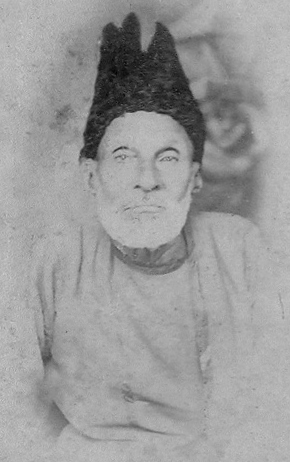
Mirza Beg Asadullah Khan (1797–1869), also known as Mirza Ghalib, was an Urdu poet from Indian subcontinent. He was popularly known by the pen names Ghalib and Asad. His honorific was Dabir-ul-Mulk, Najm-ud-Daula. During his lifetime, the already declining Mughal Empire was eclipsed and displaced by the British East India Company rule and finally deposed following the defeat of the Indian Rebellion of 1857; these are described through his work.

Rekhta was an early form of the Hindustani language. This style evolved in both the Perso-Arabic and Devanagari scripts and is considered an early form of Modern Standard Urdu and Modern Standard Hindi. According to the Pakistani linguist and historian Tariq Rehman, Rekhta was a highly Persianized register of Hindustani, exclusively used by poets. It was not only the vocabulary that was Persianized, but also the poetic metaphors, inspired by Indian landscapes and seasons, were abandoned in favor of the Persian ones i.e. bahaar (spring) replacing barsaat.

Bashir Badr is an Indian poet. He was teaching Urdu in Aligarh Muslim University. He primarily writes in Urdu language particularly ghazals. He also wrote a couplet titled Dushmani Jam Kar Karo in 1972 during Shimla Agreement that revolves around the partition of India. Badr's most of unpublished literary work, including uncertain poems was lost during the 1987 Meerut communal riots, and later he moved to Bhopal, Madhya Pradesh.
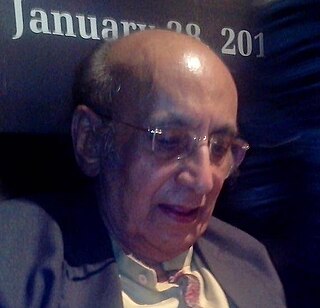
Muqtida Hasan Nida Fazli, known as Nida Fazli, was a prominent Indian Hindi and Urdu poet, lyricist and dialogue writer. He was awarded the Padma Shri in 2013 by the government of India for his contribution to literature.
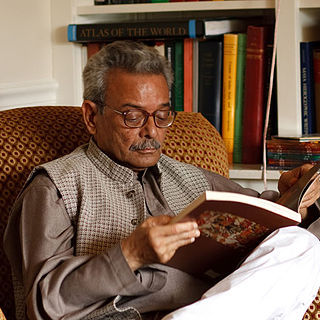
Shamsur Rahman Faruqi was an Indian Urdu language poet, author, critic, and theorist. He is known for ushering modernism to Urdu literature. He formulated fresh models of literary appreciation that combined Western principles of literary criticism and subsequently applied them to Urdu literature after adapting them to address literary aesthetics native to Arabic, Persian, and Urdu. Some of his notable works included Sher-e-Shor Angez (1996), Ka’i Chand The Sar-e Asman (2006), The Mirror of Beauty (2013), and The Sun that Rose from the Earth (2014). He was also the editor and publisher of the Urdu literary magazine Shabkhoon.

Wali Muhammad Wali (1667–1707), also known as Wali Dakhani, Wali Gujarati, and Wali Aurangabadi, was a classical Urdu poet from India.
Mirza Salaamat Ali Dabeer, (29 August 1803 – 6 March 1875) was an Urdu poet who excelled and perfected the art of Marsiya writing. He is considered the leading exponent of Marsiya Nigari or marsiya writing along with Mir Anees.
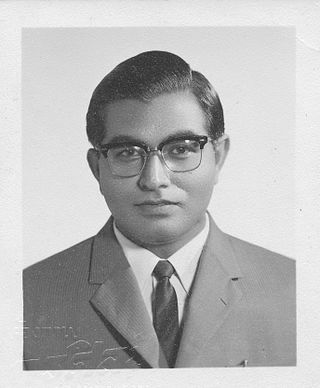
Mohsin Zaidi was an Indian Urdu poet who used the pen name 'Mohsin'. He is best known as a writer of ghazals, who expressed new ideas with this traditional form.
Syed Taqi Hassan Abedi is an Indian-Canadian physician who is also poet and scholar of the Urdu language.

Rekhta is an Urdu literary web portal started by Rekhta Foundation, a non-profit organisation dedicated to the preservation and promotion of the Urdu literature. The Rekhta Library Project, its books preservation initiative, has successfully digitized approximately 200,000 books over a span of ten years. These books primarily consist of Urdu, Hindi and Persian literature and encompass a wide range of genres, including biographies of poets, Urdu poetry, fiction, and nonfiction. The collection originates from public and research libraries in the Indian subcontinent. It serves content in multiple scripts such as Devanagari, Roman and, primarily, Nastaliq. It hosts books from centuries earlier and is recognized as the largest website in the world for the preservation of Urdu literature.

















